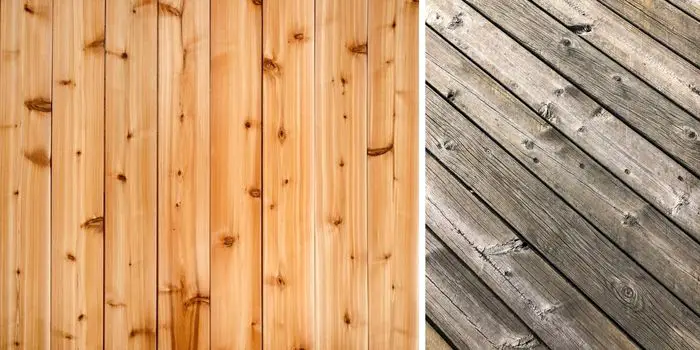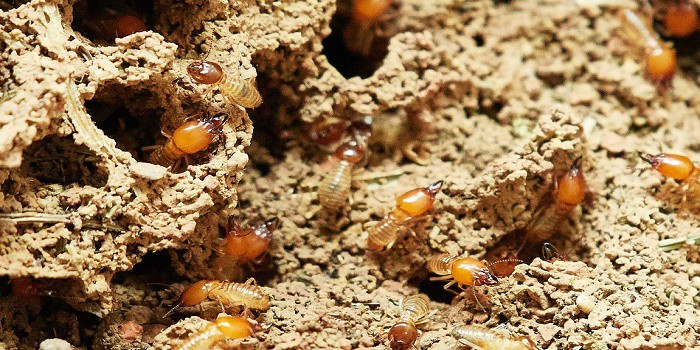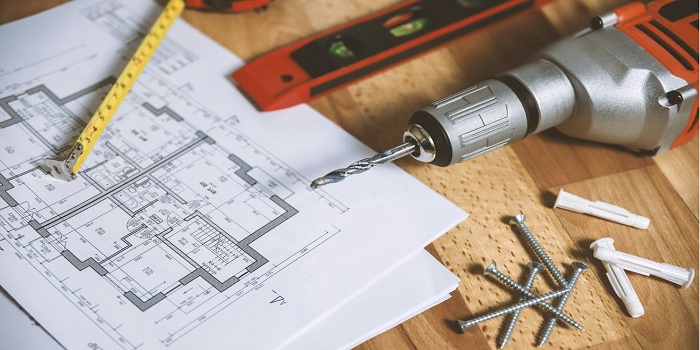
A do-it-yourself lover will often see sap coming from a deck.
You could be walking on a deck on a hot summer day and have your shoes stuck to the deck.
Most likely, using inexpensive wood to build the deck that was not given enough time to sit for the sap to dry before construction could be the cause.
This happens because the sun is constantly beating down on a deck and heating it, causing the sap to come out and congeal all over the wood.
The best way to handle sap coming out of deck boards is to treat the wood with methods that involve scraping away the sap as it shows up and reapplying any oiling or drying agents you think could help.
But wait, the process isn’t as simple as it sounds. You will need to do it right, so the problem doesn’t arise anytime soon.
So, allow me to walk through the step-by-step process that can make removing sap from deck boards effortless and effective.
Removing the Sap from the Deck Boards
All types of wood have sap in them to some degree or another – pine and fir are the biggest offenders.
In fact, the sap is how the tree moves nutrients through itself, so there is no escaping wood with sap.
Fortunately, there are a few steps you can follow to stop this from happening. Here are they…
Step 1 – Crystallize the sap
Before you can begin to remove the sap, it must be dried and hardened.
To harden and easily remove tree sap, use the crystallizing technique. To reach the desired outcome, use a heat gun.
Some saps and woods can withstand higher temperatures and longer drying times, so it is critical to determine the type of wood you are working with before applying heat.
As a precaution, start heating at 120-140°F, then gradually increase if the specific wood allows it; this will ensure that your sap slowly hardens as opposed to rapidly solidifying.
Remember that trying to clean the wet sap off wooden surfaces may even make the problem worse, as it could potentially spread the residue in an almost transparent film.
To ensure this isn’t the case, check that all sap oozing from the wood has become dry and brittle; if still sticky or moist, then it won’t be easy to clean off of surfaces.
Step 2 – Remove the dried sap crystals
Once the sap has dried, you must take extra care in removing it from your wood surfaces.
For larger clusters of crystals, simply use your hands to pick them off with ease.
However, for smaller or more tightly-gripped areas that prove too stubborn for manual removal methods, a putty knife or chisel can help chip away at the sap residue without damaging the surface of the wood beneath it.
Step 3 – Clean the sap residues from the wood surface
Even at this stage, there can be sap coming out of the wood as a fluid or gummy sap that hasn’t crystallized.
So, after removing the maximum sap crystals, it’s good to use a solvent such as turpentine to clean the remaining sap.
Alternatively, you can use alcohol-based solvents such as hand sanitizer, mineral oil, wax or varnish removers, etc.
Start by liberally applying the solvent to all the discolored areas on your wood.
Allow it to sink in for several minutes, and then move a coarse sponge around those same spots until any visible residues are gone.
Follow up with a damp cloth dipped in more chemical solution – this should give you a clean surface after wiping everything clean.
Finally, leave your treated wooden surface for a few hours to dry properly before use.
Step 4 – Sand and clean again to get rid of sap residues
Once you have thoroughly cleaned the sap resin from the wood, use 240 grit sandpaper to sand the surface down.
Sanding is an essential step in the preparation of wood for sealing, as it smoothens and eliminates marks or scratches that may have been incurred during cleaning.
After sanding has been completed, use a cloth to wipe away any dust from the surface – if you are dealing with larger areas, then a vacuum should be used instead.
Keep in mind: sealers will not adhere properly to surfaces that still contain dust particles.
Step 5 – Seal to prevent the sap from bleeding again in the future
Everything that has been done so far only sets the stage for sealing.
Without taking this crucial step, sap will still seep through even after thoroughly cleaning the wood surface – treating merely the symptoms, not curbing the real issue.
So, sealing is essential to prevent future issues from arising and ensure long-term success.
Shellac-based sealers are usually preferred as they can be applied in a layer over bare wood better than other types.
For maximum protection, you may consider staining the surface before sealing. While not entirely foolproof, staining and then sealing can help ensure the best results.
Especially in regions with cold or humid climates, this method will provide a better quality seal than using just sealant alone.

What Kind of Wood Produces the Sap Most?
Because all trees have sap, you can expect that any piece of wood you use will also possess sap to some extent.
But in general, the types of wood that contain and ooze out the sap fluid most are the following…
a) Fresh wood – You will notice that fresh wood will start to seep sap within only a few days of use.
b) Untreated wood – When preparing wood, many chemicals are used in the process.
If any step in the treatment process has not been correctly done, you will notice there is sap in the wood.
c) Incorrectly dried wood – Drying is done either in a kiln or in the sun. If the wood has not been dried properly, the sap will begin to ooze.
d) Wood that’s not dried long enough – Some types of wood have to be left longer to dry than others, and this is something that is determined by the kind of wood.
If whoever prepared your wood isn’t aware of this and does not allow it to sit as long as it needs to, you will notice that the wood will ooze sap.
Can You Paint or Stain Over Deck Boards with Sap?
You can paint right over the sap fluid, but it may make the paint look bumpy. And as time moves forward, the paint may begin to bubble and peel due to the sap.
Also, you can stain the wood if you notice that sap is seeping out, but the parts of the wood where the sap has already begun to congeal won’t look the same as the smooth wood areas.
When there is an extreme case of sap, it could even cause large areas of the wood to remain unstained, creating an unattractive blotchy look.
To avoid this, it’s good first to sand the wood to remove any congealed sap and then apply the paint or stain to the wood. While this will finish the wood the way you want, it won’t prevent more sap from showing up later down the line.
Final Thoughts
While unfinished wood is most susceptible, there are many reasons why sap (pitch) might come from finished wood.
If, for example, you used green wood that has not been adequately dried, the sap can get stuck in the little crevices and eventually seep through the exterior.
For this reason, the standard practice for woodworking and preventing the sap is to allow the wood to dry completely, either in the sun or in a kiln, before moving on.
If you still see the sap on wood beams or deck boards, follow the steps above to get it off completely.

Hi, I am Mark Garner a professional carpenter, woodworker, and DIY painter. I live in the small city of Peoria, Arizona as a semi-retired woodworker. I have started this blog with a simple motive to help you with my wood experience in this sector. If you like to know more about what I love doing and how it all got started, you can check more about me here.




